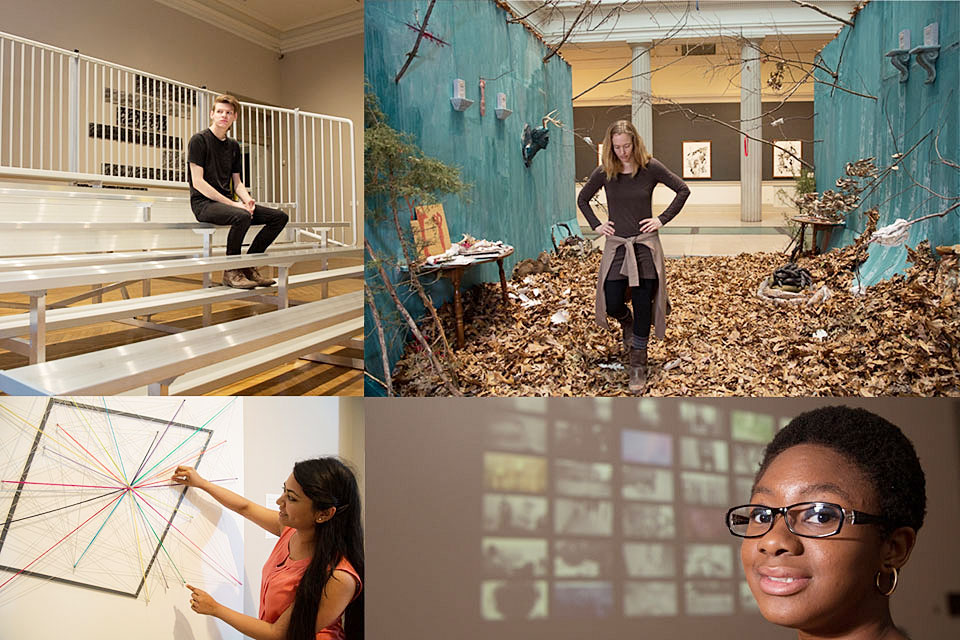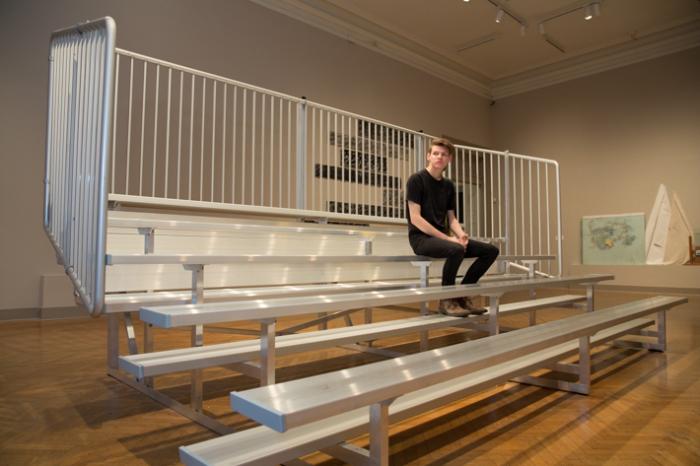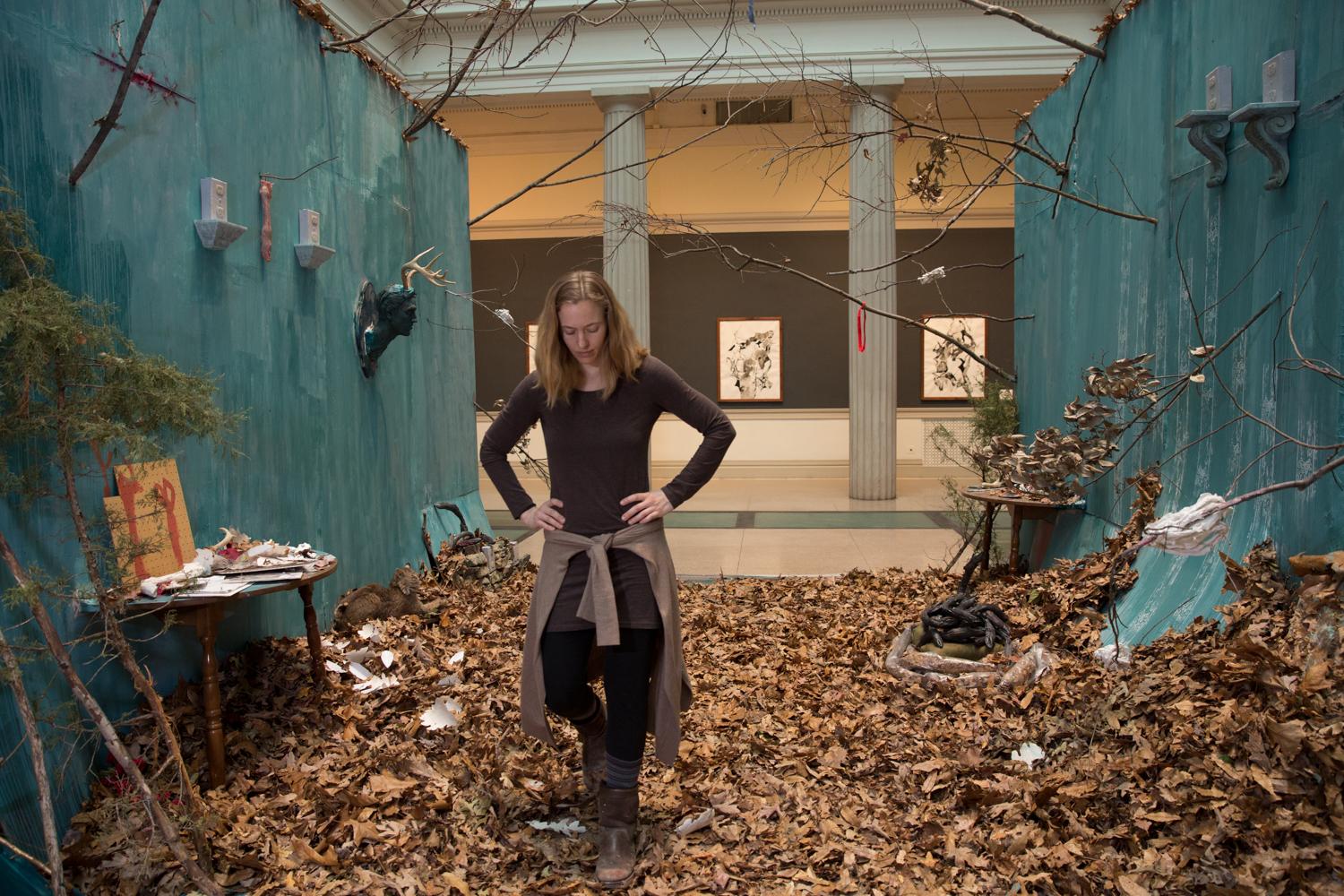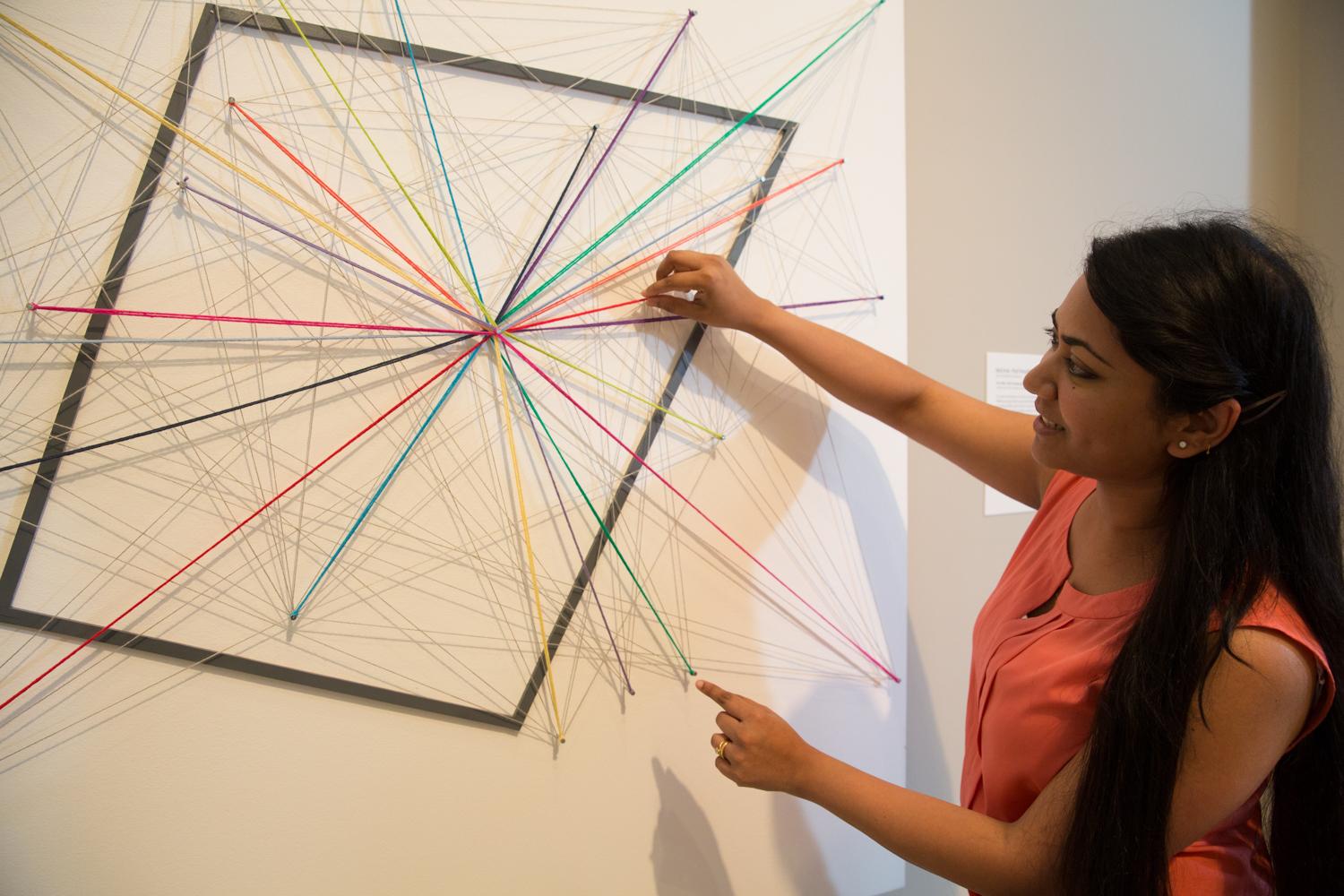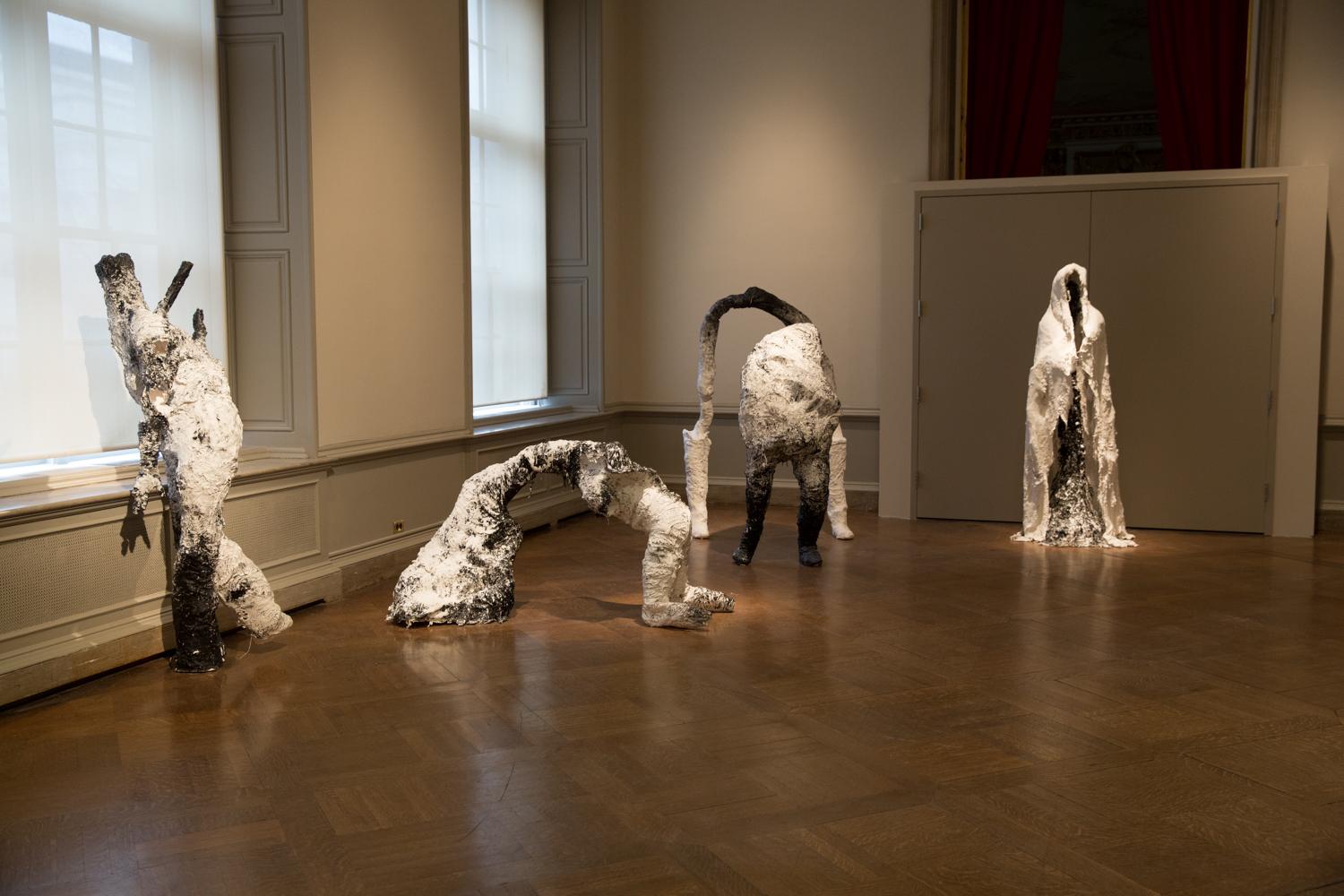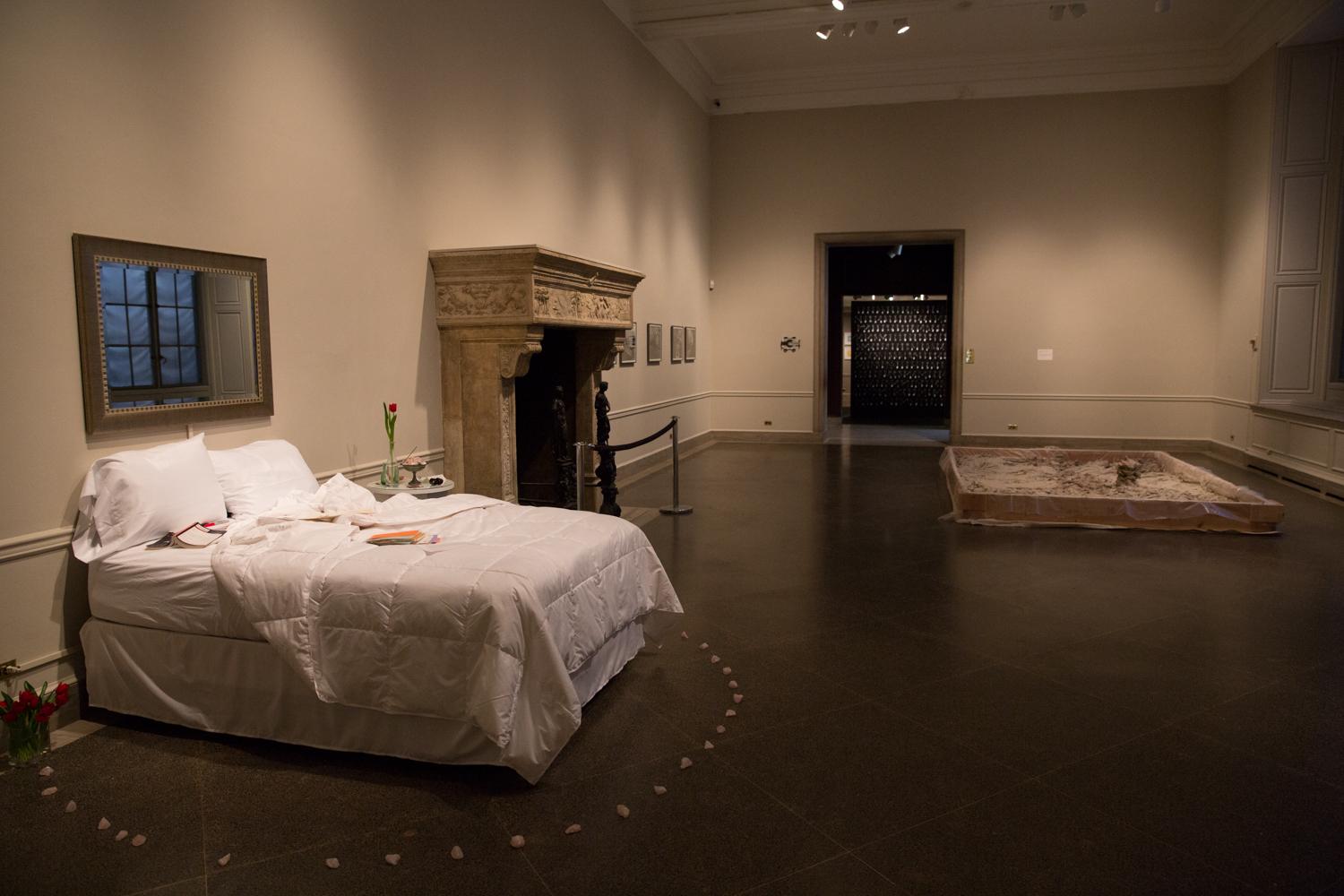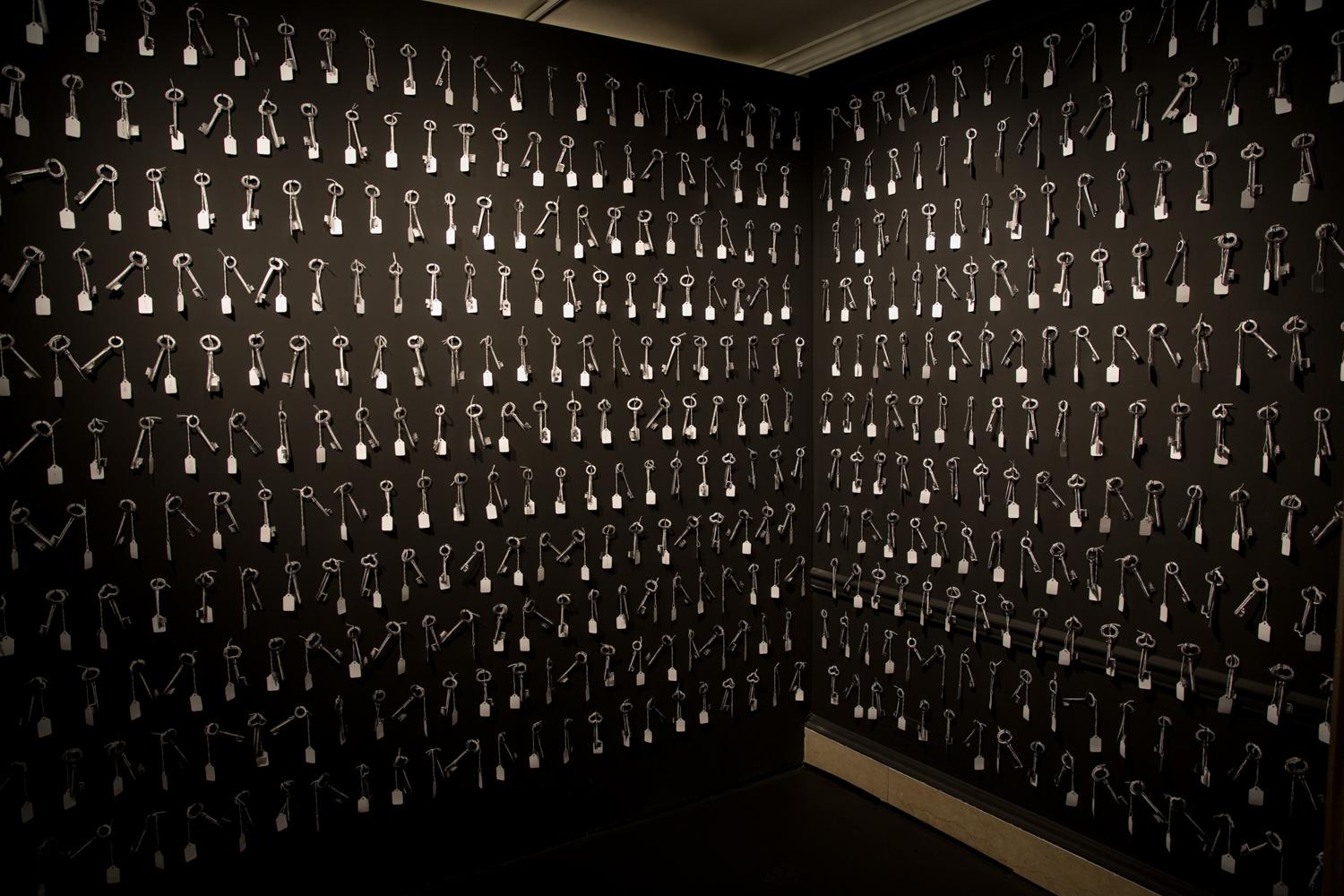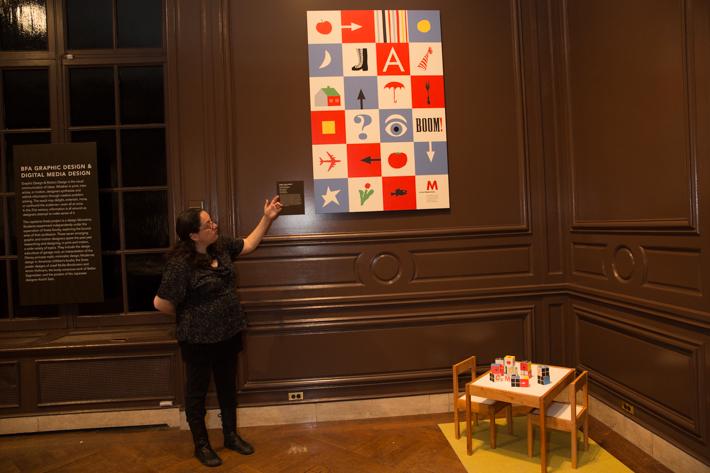If you had to summate all the details that have gone into the Corcoran School of the Arts and Design’s NEXT exhibition, you might tally up the 8,000 pieces of video footage senior Kesi Marcus shot for her installation, “In My Own Little World.” Perhaps you’d leaf through each of the 1,528 pages second-year graduate student Arnold Thomas Bigger individually folded to create his book arts piece, “Lingua Franca Series.” Or maybe you would calculate exactly how many thousands of digital photographs senior Noelle Smith snapped over eight months, while chronicling the life of a family living below the poverty line in Annapolis, Md.
No matter how you count the particulars of NEXT, they add up to the culmination of every Corcoran student’s experience at the school, and the apogee of his or her artistic career—so far, at least.
NEXT will open tonight to hundreds of visitors eager to see the newest graduating class of the same institution that produced legends like Tim Gunn. The exhibition will feature the work of 40 seniors on the ground floor of the 17th Street Corcoran building, while a second show of 63 graduate students will open on the top and main floors on April 29. Both exhibitions will run through May 18. The show has become a mainstay in the D.C. arts community, giving the city an early glimpse at an up and coming generation of artists and designers.
“NEXT serves many purposes, one of which is that it allows students to show their artwork and themselves to the world for the first time,” said Andy Grundberg, NEXT curator and photography professor at the Corcoran School.
The Corcoran School has a longstanding tradition of presenting student work. In 2011, it began calling its annual thesis exhibition “NEXT at the Corcoran.” Since then, the show marks a rite of passage for graduating students, and the exposure has led many artists and designers to be discovered by galleries around the country.
The entire production is Corcoran born-and-bred, with nearly every piece of the show passing through student hands. In a yearlong course called Design Lab, students shaped the overall look and brand of the exhibition. During the last couple of days, galleries in the 17th Street Corcoran building have been packed with students helping exhibition managers install pieces, ensuring their work delivers the message they intended.
Time-lapse Recording of Chloe Rubenstein's NEXT 2015 Installation.
That’s the other lesson of NEXT—teaching students to become cogent artists and designers who can articulate viewpoints entirely their own. Because the show is something of an introductory handshake between students and the general public, the artists in NEXT offer a first impression of themselves that is profoundly intimate. Some of the students’ work includes vulnerabilities revealed delicately, like senior Sohee Lim’s “New Beginning,” which consists of video footage she took while she observed her ailing grandmother finding religion before death.
Other pieces are a more forceful shove at social observations students have made. Senior Eliot Hicks’ “Versus,” for example, seditiously questions the American tradition of spectator sports by placing a 50-person stadium bleacher directly in front of a blank wall, where viewers observe absolutely nothing.
The monochromatic film clips in senior Kesi Marcus’ “In My Own Little World” mirror the contents her imagination. As a child, she was told she lived in “her own little world”—hence the name of the piece. Short, flickering videos tell the narrative of a protagonist trading reality for a surreal dimension.
“I knew the story when I started the project, but I didn’t know how to go about it,” she said. “And because I’m projecting my imagination, which is dynamic and full of movement, I decided to do video.”
Figuring out the process took Ms. Marcus almost an entire year. Like most Corcoran students, she worked throughout the last two semesters until she landed on the final version of the project that now rests on the Corcoran’s walls.
“So much of what we take pride in doing is getting students to figure out not only what they want to express, but how to express it,” Mr. Grundberg said. “In [NEXT], that’s a lot of what you see—the students finding their way.”


